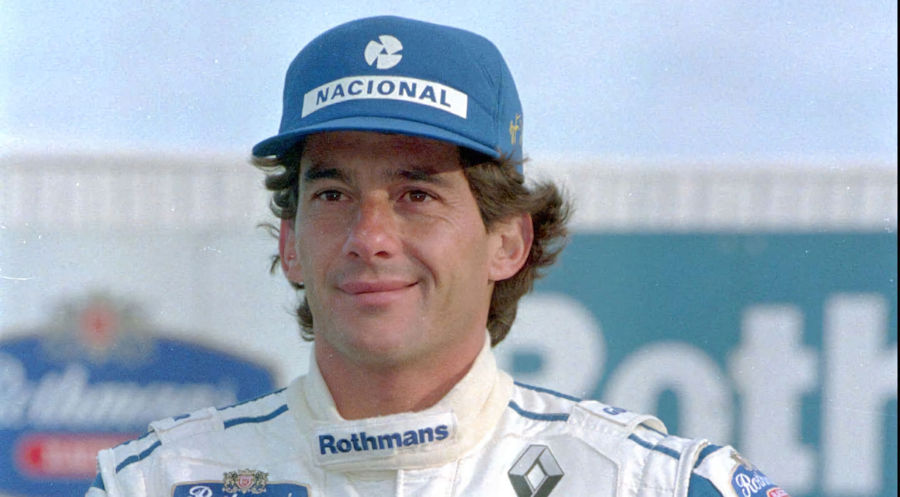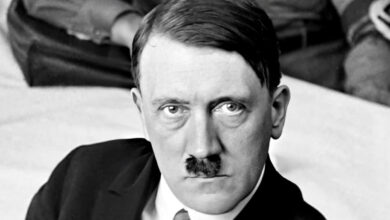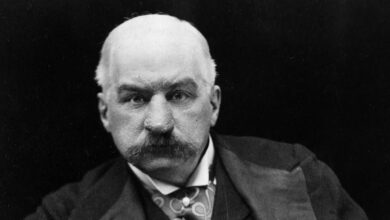
Podcast: Play in new window | Download
Subscribe: Spotify | Amazon Music | Youtube Music | RSS
“Being second is to be the first of the ones who lose.” – Ayrton Senna
Ayrton Senna da Silva was born on 21 March 1960 in São Paulo, Brazil to parents Milton da Silva and his wife Neide Senna da Silva. He was the middle of three children, having an older sister called Viviane and a younger brother called Leonardo.
From being a young child, he showed an interest in cars and motorsport and wanted to get involved in racing. He was fortunate to have been born into a wealthy family as his father was a factory owner and so his racing desires were catered for by his family. His earliest known race was in a go-kart when he was only four years old. Although that race was only for fun it was clear that he would go on to develop a passion for racing as he won the race. By the age of 7, he had learned to drive a Jeep around the family farm, and how to change gear without using the clutch.
In 1977 Ayrton graduated from school with grades in physics, mathematics, chemistry, and English and he enrolled in college to study business administration but dropped out after only three months.
At the age of 17, he won the South American Kart Championship and went on to contest the World Karting Championship every year between 1978 and 1982 finishing runner-up in 1979 and 1980.
However, although he was successful in karting, Ayrton wanted to further his career and this would never be achieved in South America, so he moved to the UK where in 1981 he won the British Formula Ford 1600 title with the Van Diemen team. At around the same time, he decided that he would be known by his mother’s maiden name as da Silva was quite common and so he dropped that part becoming simply Ayrton Senna.
Up to this point Senna wasn’t convinced that he could make it as a racing driver and so decided to retire and even returned to Brazil, but the offer of £10,000 to race in the British Formula Ford 2000 Championship was too good to turn down and so he almost immediately returned to the UK, going on to win the title.
In 1983 he narrowly won the British Formula Three Championship after fighting off a late charge from Great Britain’s Martin Brundle, who was driving for Eddie Jordan Racing. It was at this time that he started to become noticed by various Formula One teams and received offers of test drives from the likes of Williams and McLaren. However, there was stiff competition for seats at the big prestigious teams so when Senna entered Formula One the following year, it was with Toleman.
Although Toleman’s cars were not the greatest, Senna was still able to score his first Formula One points when he finished 6th in only his second race at the South African Grand Prix at Kyalami.
For the 1985 season, Senna moved to Lotus-Renault driving alongside Elio de Angelis and it was here that he achieved his first Formula One pole position. He won the race, which was also a first for him, whilst at the same time setting the fastest lap, a Formula One grand slam. He went on to also win the Belgian Grand Prix, finishing the championship season fourth overall. He finished fourth again the following year as although he was the top qualifier throughout the season, reliability issues prevented him from scoring enough points to do better. New engines from Honda for the 1987 season didn’t improve Senna’s results and so he finished third that season. However, he had established a good relationship with Honda which would prove to be useful as it was announced that for the 1988 season, Senna would drive for McLaren who had just secured a deal with Honda to supply it with its new V6 turbo engine.
The move to McLaren-Honda for the 1988 season saw him driving alongside double-world champion Alain Prost. The pair were fierce rivals on the track, but they realized that if they were to be successful, they had to work together off it. Due to the work, they both put into testing and the relationships they had with the team and with Honda in particular, out of sixteen races on the Formula One calendar that season, McLaren won 15 of them and at the age of 28 after securing eight wins to Prost’s seven, Ayrton Senna won his first Formula One world title. Amid an intensifying rivalry with Alain Prost, Senna went on to win two more world championships with McLaren in 1990 and 1991. However, the McLaren cars were starting to lose technical ground to other teams, especially Williams-Renault and so he could only finish 4th in the 1992 season and 2nd in 1993.
For the 1994 season, and with the retirement of Alain Prost, a move that had been on the cards for a couple of years finally happened and for a reported salary of $20 million, Ayrton Senna moved to Williams, teaming up with Damon Hill.
Senna immediately started to express concern about his car and about some of the new rules that had been introduced which included the banning of electronic driver aids such as active suspension, traction control and ABS braking, and he predicted that there were likely going to be some serious accidents for the FIA to contend with.
In the first two races of the 1994 season, he took pole position but failed to finish either race. The third race of the season was the San Marino Grand Prix at Imola, and Senna declared that his campaign would start there, expressing a desire to win the remaining 14 races of the season. However, the San Marino Grand Prix weekend was a weekend of tragedy. The first accident to occur was during a Friday practice session where fellow Brazilian Rubens Barichello suffered a broken arm and a broken nose causing him to withdraw from the race. But the next day worse was to come when the Austrian rookie Roland Ratzenberger was killed when his car hit a concrete wall.
It was clear that although Ayrton had only recently met Ratzenberger, his death affected him deeply. He went to the scene of the accident and spent the morning with other drivers having discussions about how safety could be improved even talking with Alain Prost, who was now working for the media about the possibility of reinstating the Grand Prix Driver’s Association and that he would be willing to take the lead.
However, he wouldn’t get the chance as on the following day, Sunday 1 May 1994, on the seventh lap of the San Marino Grand Prix at the high-speed Tamburello corner, Ayrton Senna’s car left the track and hit a concrete wall at over 140mph. The medical team extracted him from his car within two minutes and he was rushed to hospital but was pronounced dead when he arrived.
His death shook the world of motorsport and in Brazil, it was even more deeply felt as Ayrton Senna was not only an extraordinary racing talent, but he was also a humanitarian who worked hard to improve the lives of impoverished people in his home country, even setting up the Ayrton Senna Institute shortly before his death which is dedicated to helping disadvantaged people in Brazil. When his body was flown home to Sao Paulo it is estimated that three million people lined the streets to witness his return
Podcast: Play in new window | Download
Subscribe: Spotify | Amazon Music | Youtube Music | RSS




